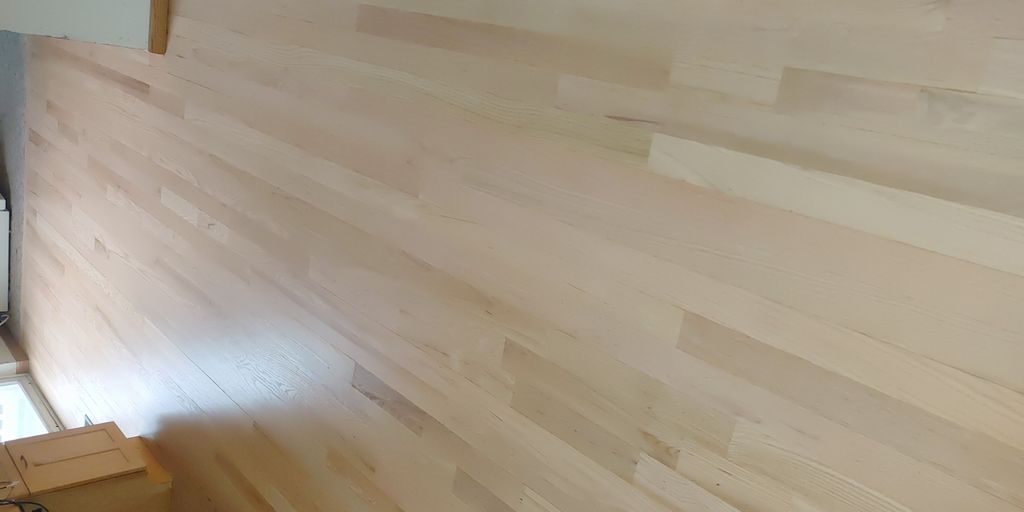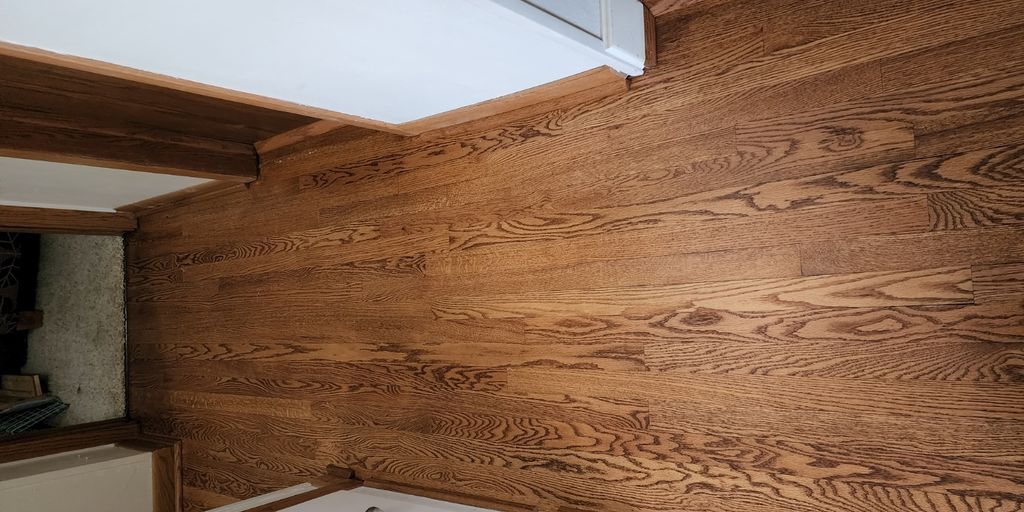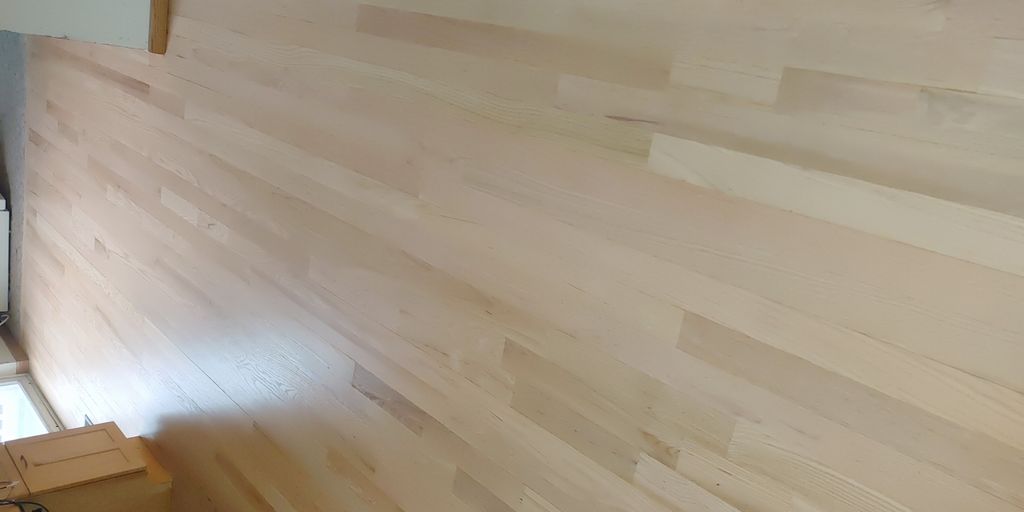Setting up a home gym is an exciting venture, but choosing the right flooring can be a bit overwhelming. The right gym flooring for your home gym not only enhances your workout experience but also protects your existing floors and reduces the risk of injuries. With so many options available, understanding the pros and cons of each material can help you make an informed choice that fits your needs and budget.
Thank you for reading this post, don't forget to subscribe!Key Takeaways
- Rubber flooring is tough and great for absorbing shock, making it ideal for heavy workouts.
- Foam tiles are soft and comfortable, perfect for floor exercises but may not hold up under heavy weights.
- Vinyl flooring is stylish and easy to clean, offering a modern look but less shock absorption.
- Cork flooring is eco-friendly and provides a warm surface, but it may need sealing to resist moisture.
- Carpet tiles can add comfort and warmth, but they require regular cleaning to stay fresh.
1. Rubber Flooring
Rubber flooring is a top choice for home gyms due to its durability and shock absorption. Made primarily from recycled tires, it’s not only eco-friendly but also resilient against heavy weights and equipment. Available in tiles, rolls, and mats, rubber flooring fits various budgets and styles, typically costing between $3 to $8 per square foot.
Pros:
- Durability: Handles heavy equipment and high-impact workouts effortlessly.
- Shock Absorption: Reduces strain on joints and minimizes noise.
- Low Maintenance: Easy to clean and resistant to water and sweat.
- Variety: Comes in multiple colors, patterns, and thicknesses to match any gym aesthetic.
Cons:
- Odor: New rubber flooring can have a strong smell.
- Weight: Heavy and can be difficult to install, especially in rolls.
- Heat Sensitivity: May expand or contract with temperature changes.
Rubber flooring is a wise investment for any home gym, providing a safe and comfortable workout environment.
Summary Table of Rubber Flooring Features
| Feature | Description |
|---|---|
| Durability | High resistance to wear and tear |
| Shock Absorption | Excellent for joint protection |
| Maintenance | Low upkeep required |
| Installation | Available in easy-to-install tiles or rolls |
| Cost | Ranges from $3 to $8 per square foot |
2. Foam Tiles
Foam tiles are a popular choice for home gyms, offering a balance of comfort and affordability. They provide a cushioned surface that is ideal for low-impact workouts like yoga and Pilates. Here are some key points to consider:
- Lightweight and Portable: Foam tiles are easy to move and rearrange, making them perfect for flexible workout spaces.
- Variety of Thicknesses: Available in different thicknesses, you can choose the level of cushioning that suits your needs.
- Cost-Effective: Prices typically range from $0.50 to $2.50 per square foot, making them a budget-friendly option.
However, it’s important to note that foam tiles may not be suitable for heavy weightlifting or high-impact exercises. They can compress over time, which might lead to damage underneath.
Foam flooring is a great choice for those who prioritize comfort and ease of use, but it may not withstand the rigors of intense workouts.
Pros and Cons of Foam Tiles
| Pros | Cons |
|---|---|
| Comfortable and soft | Less durable than rubber |
| Easy to install | Not water-resistant |
| Good for low-impact exercises | Can absorb spills |
In summary, foam tiles can enhance your home gym experience, especially for lighter workouts. Just be mindful of their limitations when planning your fitness space.
Consider foam tiles if you want a comfortable, easy-to-install flooring option for your home gym.
3. Vinyl Flooring
Vinyl flooring is a fantastic choice for your home gym, offering a blend of style and practicality. It’s durable, easy to clean, and resistant to moisture, making it ideal for various workout activities. Here are some key points to consider:
- Aesthetic Appeal: Vinyl comes in a wide range of colors and designs, allowing you to create a stylish workout space that resembles hardwood or stone.
- Moisture Resistance: This flooring is perfect for areas prone to dampness, ensuring your gym remains safe and clean.
- Durability: Vinyl can withstand heavy equipment and frequent use, making it a long-lasting option for your home gym.
| Feature | Description |
|---|---|
| Cost | Ranges from $2 to $7 per square foot |
| Maintenance | Low maintenance; easy to clean |
| Installation | Can be complex; may require a Local flooring Professional for best results |
Vinyl flooring is a great investment for homeowners looking to enhance their gym space with a modern touch while ensuring functionality and ease of maintenance.
While vinyl is not as shock-absorbent as rubber or foam, it provides a solid surface for various workouts. If you’re looking for a flooring option that combines durability with style, vinyl is definitely worth considering!
4. Cork Flooring
Cork flooring is an eco-friendly option that stands out for its natural resilience and shock-absorbent qualities. This flooring is comfortable underfoot, providing a soft yet stable surface ideal for various exercises. Typically, cork flooring costs between $3 to $10 per square foot. While it is durable, it does require sealing to protect against moisture and heavy wear.
Pros:
- Eco-Friendly: A renewable resource that’s biodegradable and recyclable.
- Comfort: Offers a natural cushioning effect that is gentle on the joints.
- Noise Reduction: Excellent acoustic properties to minimize workout noise.
- Thermal Insulation: Naturally keeps the room warmer in winter and cooler in summer.
Cons:
- Maintenance: Needs sealing and more care to prevent water damage and staining.
- Durability: Can be prone to dents from heavy equipment and may fade in direct sunlight.
- Cost: Generally more expensive than synthetic options like foam or rubber.
Cork flooring not only enhances the aesthetic appeal of your home gym but also provides a safe and comfortable environment for your workouts.
In summary, cork flooring is a great choice for homeowners looking for a balance of comfort and durability in their home gym. For those considering installation, consulting with local flooring refinishers can provide valuable insights and floor refinishing services to ensure the best results.
5. Carpet Tiles
Carpet tiles are a fantastic choice for home gyms, especially in areas where comfort and noise reduction are essential. They provide a soft surface that is perfect for activities like yoga, stretching, and light cardio.
Benefits of Carpet Tiles
- Comfort: The cushioned surface helps reduce fatigue during workouts.
- Noise Reduction: Carpet tiles absorb sound, making them ideal for high-traffic areas.
- Easy Installation: Many carpet tiles come with peel-and-stick backing, allowing for quick and simple setup.
Considerations
- Durability: While carpet tiles are great for lighter activities, they may not withstand heavy gym equipment as well as rubber flooring.
- Maintenance: Regular vacuuming and occasional deep cleaning will keep your carpet tiles looking fresh.
- Replacement: If a tile gets damaged, it can be easily replaced without needing to redo the entire floor.
Carpet tiles can transform a hard surface into a cozy workout area, making them a versatile option for many homeowners.
In summary, carpet tiles offer a blend of comfort and practicality, making them a worthy consideration for your home gym flooring.
6. Engineered Hardwood Flooring

Engineered hardwood flooring is a fantastic choice for homeowners looking for a blend of style and durability. This type of flooring consists of multiple layers of wood, with a top layer of hardwood veneer. This construction makes it more stable and less prone to warping compared to solid hardwood, making it suitable for various areas in your home, including basements.
Benefits of Engineered Hardwood Flooring
- Stability: Engineered hardwood is less affected by humidity and temperature changes, making it ideal for fluctuating environments.
- Aesthetic Appeal: Available in a wide range of wood species and finishes, it can match any interior design.
- Increased Home Value: Installing hardwood flooring can significantly enhance the value of your home, making it a smart investment.
Maintenance Tips
- Regularly sweep or vacuum to remove dirt and debris.
- Use a damp mop with a hardwood floor cleaner for deeper cleaning.
- Avoid using harsh chemicals or abrasive cleaning tools.
Remember, the right hardwood flooring can significantly enhance the beauty and value of your home. Take your time to explore different options and consult with professionals if needed.
Key Considerations
When choosing engineered hardwood flooring, consider the following:
- Lifestyle: If you have kids or pets, opt for a more durable finish.
- Room Conditions: Evaluate moisture levels in areas like basements or kitchens.
- Budget: Engineered hardwood is often more affordable than solid hardwood, making it a cost-effective option for many homeowners.
In summary, engineered hardwood flooring offers a perfect balance of beauty, durability, and practicality, making it an excellent choice for your home gym or any other space.
7. Bamboo Flooring
Bamboo flooring is a sustainable choice that is gaining popularity among homeowners. It combines [strength and eco-friendliness](https://www.familyhandyman.com/list/flooring-guide/?srsltid=AfmBOoqRfFGKSDZ0CO3uvfsWW_gnr-rB2bNQfjd3eiGybGPSB2uqGVmp), making it an excellent option for your home gym. Bamboo is technically a grass, but it performs like hardwood, offering durability and a unique aesthetic.
Pros and Cons of Bamboo Flooring
Pros:
- Eco-Friendly: Bamboo is a renewable resource that grows quickly, making it a [sustainable choice](https://www.familyhandyman.com/list/flooring-guide/?srsltid=AfmBOoruRq7k4Fo3LgSJ87K8BM9iDnEq4hKmGy2OrJvwwMwYm-B0H2tZ).
- Durability: Some variations, like strand-woven bamboo, are incredibly strong and resistant to wear.
- Aesthetic Appeal: Offers a modern look with unique grain patterns that can enhance your gym’s design.
Cons:
- Susceptibility to Scratches: Bamboo can be prone to scratches and dents, especially in high-traffic areas.
- Moisture Sensitivity: It may not perform well in very humid environments without proper sealing.
- Limited Style Options: While it has a unique look, the color and design choices can be more limited compared to other flooring types.
Cost Considerations
Bamboo flooring typically ranges from $3 to $8 per square foot, depending on the quality and style. Here’s a quick comparison:
| Type of Bamboo Flooring | Price per Square Foot |
|---|---|
| Solid Bamboo | $3 – $6 |
| Engineered Bamboo | $4 – $8 |
| Strand-Woven Bamboo | $5 – $10 |
Bamboo flooring is not just a stylish choice; it’s also a smart investment for those looking to create a comfortable and durable workout space. Consider your gym’s specific needs when choosing the right flooring option.
8. Artificial Turf

Artificial turf is a fantastic choice for homeowners looking to create a versatile workout space. It’s suitable for both indoor and outdoor use, making it perfect for various activities. This flooring option is especially popular for functional training and sports drills, providing a surface that mimics the feel of grass.
Benefits of Artificial Turf
- Versatility: Great for agility drills, sled pushes, and other high-intensity workouts.
- Durability: Designed to withstand heavy use, making it ideal for busy gyms.
- Low Maintenance: Easy to clean and does not require watering or mowing like real grass.
Considerations
- Cost: Installation can range from $3 to $6 per square foot, depending on the type and area size.
- Comfort: While it offers good traction, a padding layer underneath is recommended for added cushioning, especially in high-impact areas.
Artificial turf can last between 8 to 15 years with proper care, making it a long-term investment for your home gym.
In summary, artificial turf not only enhances the aesthetic appeal of your gym but also provides a functional and durable surface for a variety of workouts. Whether you’re training for sports or just looking to stay fit, this flooring option is worth considering.
9. Concrete Flooring
Concrete flooring is a strong and practical choice for your home gym. It offers incredible durability and requires minimal maintenance, making it perfect for intense workouts. If you already have a concrete slab, exposing and finishing it can be a cost-effective solution. Here are some key points to consider:
Pros:
- Durability: Concrete can withstand heavy equipment and high-impact activities without damage.
- Low Maintenance: It’s easy to clean and resistant to stains and odors.
- Cost-Effective: If you have an existing concrete base, finishing it is often inexpensive.
- Cool Surface: Its naturally cool temperature is beneficial in warmer climates.
Cons:
- Hard Surface: It may not provide enough cushioning for high-impact exercises, which can be tough on your joints.
- Cold Feel: Concrete can feel cold underfoot, which might be uncomfortable during workouts.
- Cracking: Over time, concrete can develop cracks, especially if not properly maintained.
Concrete flooring is a solid choice for homeowners looking for a durable and low-maintenance option for their home gym. It can handle heavy machinery without locking in any odors while naturally providing a clean and modern aesthetic.
In summary, concrete flooring is a practical option for those who prioritize durability and ease of maintenance in their home gym. Whether you’re lifting weights or doing cardio, it provides a sturdy foundation for your fitness journey.
10. Gym, Rubber, and Cork Flooring

When it comes to creating a home gym, the choice of flooring is crucial. Gym, rubber, and cork flooring are popular options that offer a blend of comfort and durability. These materials are designed to withstand heavy use while providing a safe environment for workouts.
Benefits of Gym Flooring
- Durability: Both rubber and cork flooring are built to last, making them ideal for high-traffic areas.
- Shock Absorption: They help reduce impact on joints, which is essential for exercises that involve jumping or heavy lifting.
- Easy Maintenance: These flooring types are simple to clean, ensuring your gym remains hygienic and fresh.
Rubber Flooring Highlights
- Comfort: Rubber flooring provides excellent cushioning, making it ideal for exercises that involve sitting or lying down.
- Cost-effective: Generally more affordable than other options, rubber flooring is a smart choice for budget-conscious homeowners.
Cork Flooring Highlights
- Eco-friendly: Cork is a sustainable material that offers a warm surface underfoot, enhancing comfort during workouts.
- Noise Reduction: Both rubber and cork flooring help minimize noise, making your gym a quieter space for exercise.
Investing in quality gym flooring not only enhances your workout experience but also adds value to your home.
In summary, choosing the right flooring for your home gym can significantly impact your fitness journey. Whether you opt for the durability of rubber or the comfort of cork, both options provide excellent benefits for your workout space.
If you’re considering upgrading your gym flooring, look no further! Our rubber and cork flooring options are perfect for creating a safe and comfortable workout space. Visit our website to learn more about our gym flooring services and get a special discount when you combine services!
Final Thoughts on Choosing Gym Flooring
In conclusion, selecting the right flooring for your home gym is essential for both comfort and safety. With options like rubber, foam, and vinyl, you can find a material that fits your workout style and budget. Remember to consider how often you’ll use the space and what types of exercises you’ll do. A good floor can protect your joints, reduce noise, and make your workouts more enjoyable. Take your time to explore your choices, and don’t hesitate to ask for help if you need it. Your home gym should be a place where you feel motivated and comfortable, and the right flooring can help you achieve that.
Frequently Asked Questions
What is the best type of flooring for a home gym?
Rubber flooring is often considered the best choice for home gyms because it is durable, provides good shock absorption, and is easy to clean.
Are foam tiles suitable for heavy workouts?
Foam tiles are great for light exercises and yoga, but they may not hold up well under heavy equipment or intense workouts.
How do I maintain my gym flooring?
Most gym flooring types require regular cleaning with mild soap and water. Avoid harsh chemicals that could damage the surface.
Is vinyl flooring a good option for a home gym?
Yes, vinyl flooring is a good option as it is moisture-resistant and easy to maintain, but it may not provide as much shock absorption as rubber.
Can I install gym flooring myself?
Many types of gym flooring, like foam tiles and vinyl, are designed for easy DIY installation, while others may require professional help.
How much does gym flooring cost?
The cost of gym flooring can vary widely, ranging from about $1 to $7 per square foot, depending on the material.
Is cork flooring a good choice for a gym?
Cork flooring is eco-friendly and provides a soft surface, but it may not be as durable as rubber or vinyl for heavy use.
What should I consider when choosing gym flooring?
Consider factors like the type of exercises you do, the durability of the material, ease of cleaning, and your budget.



